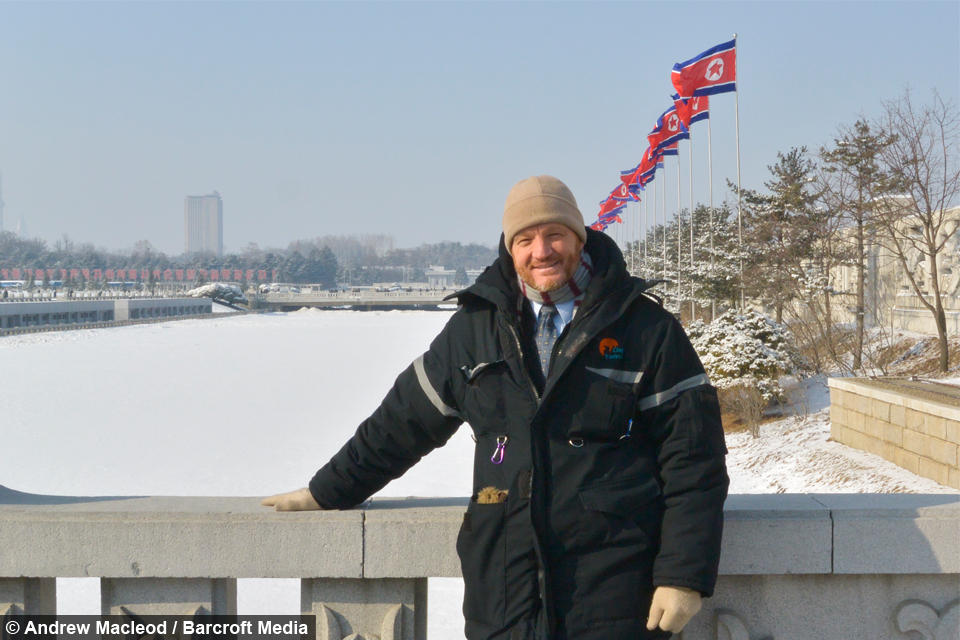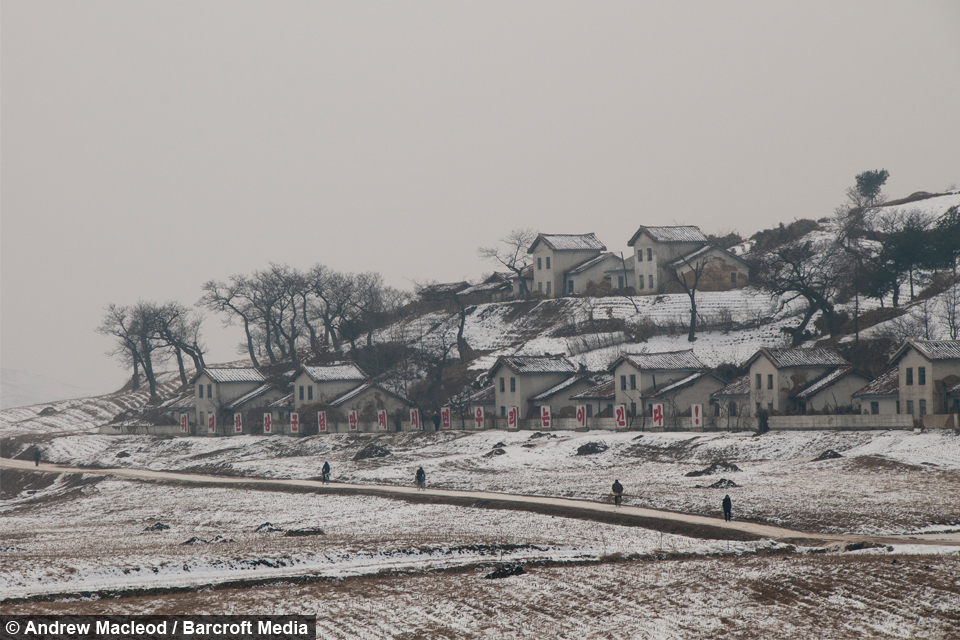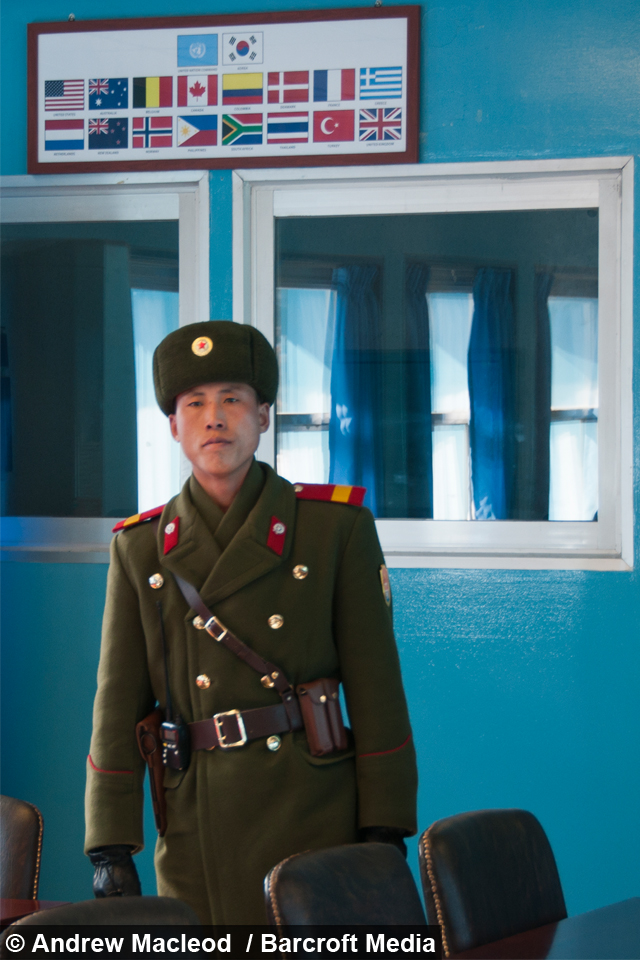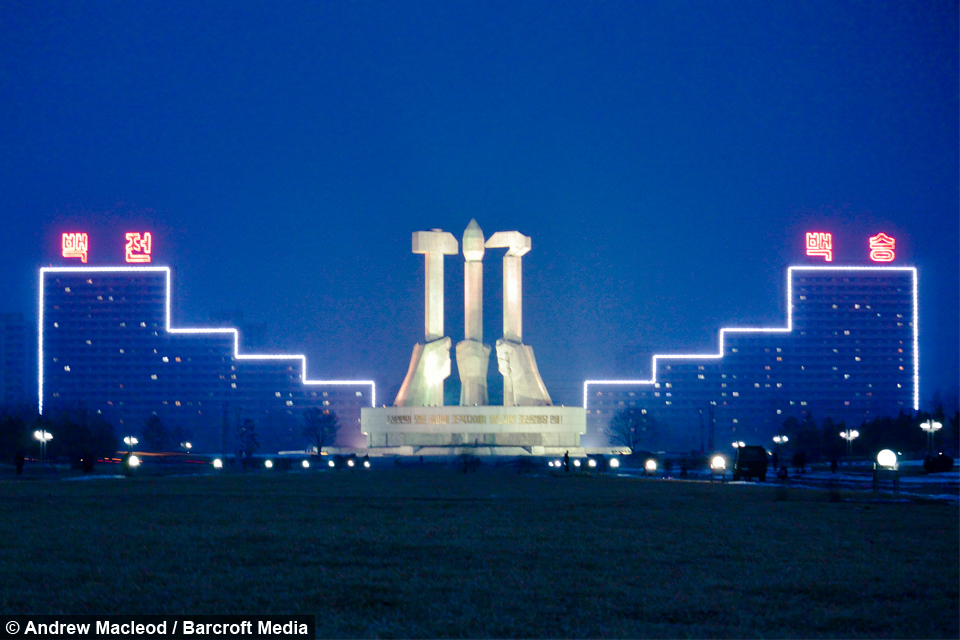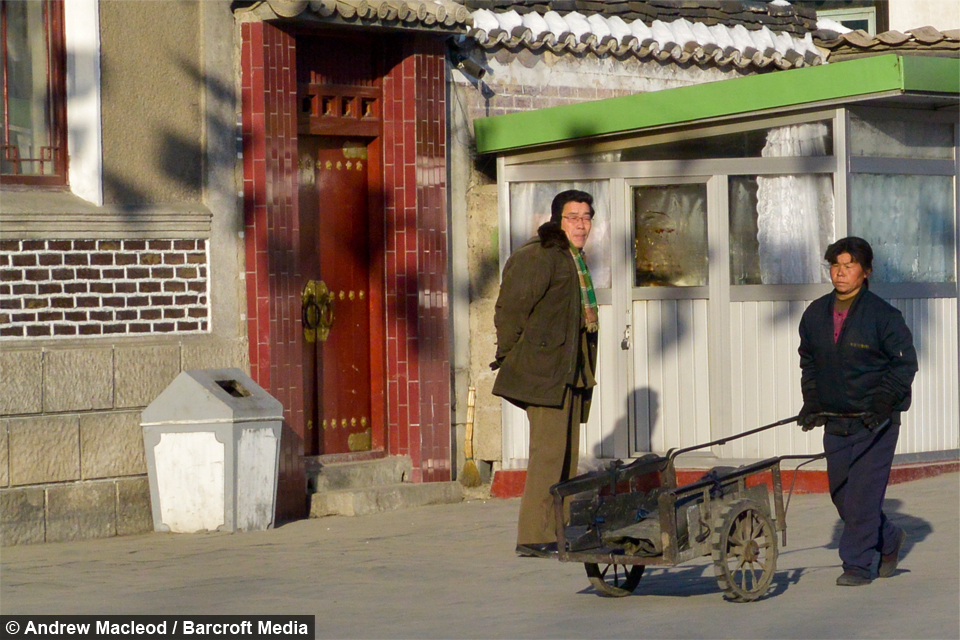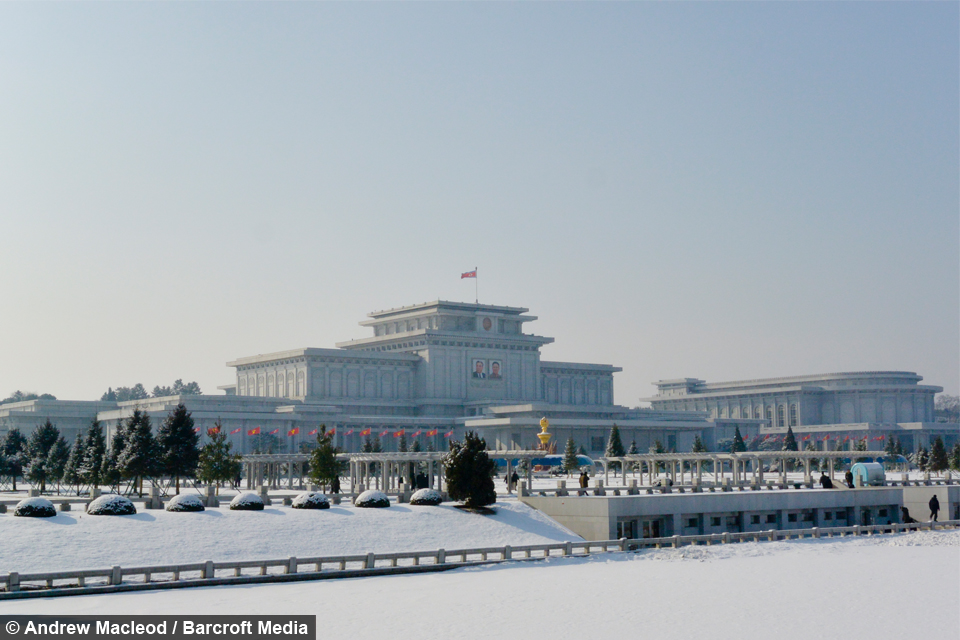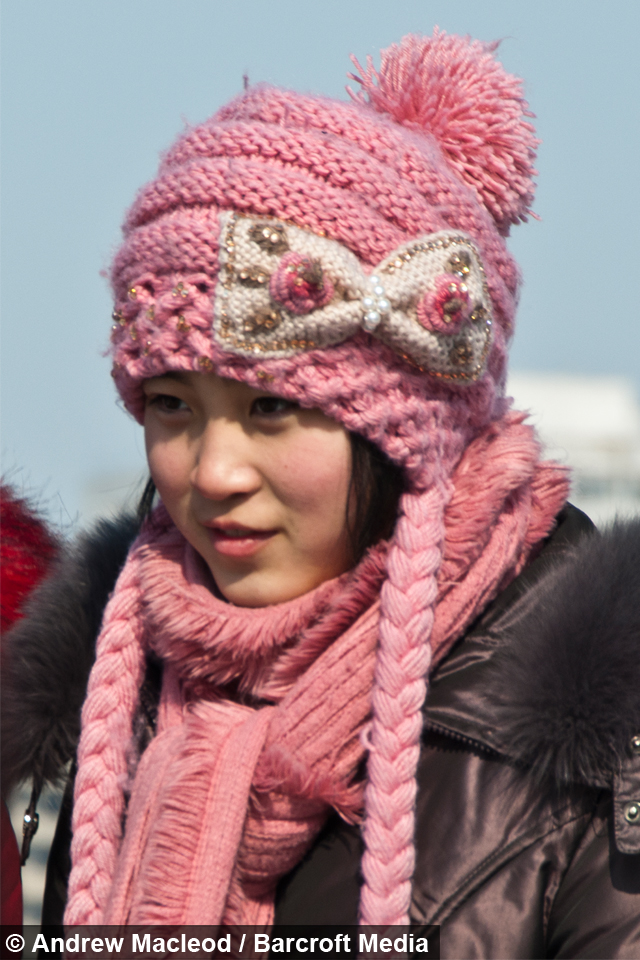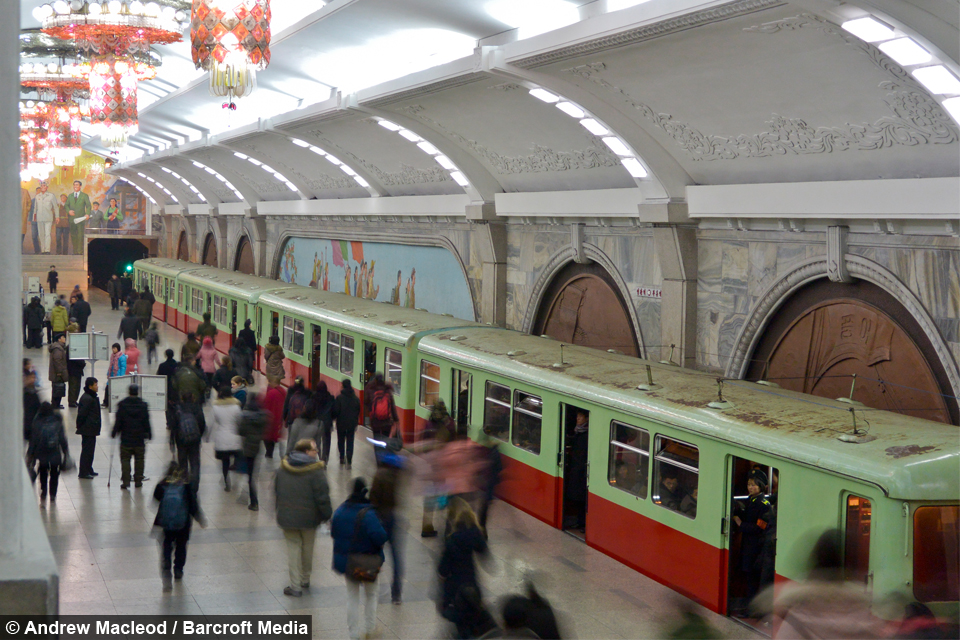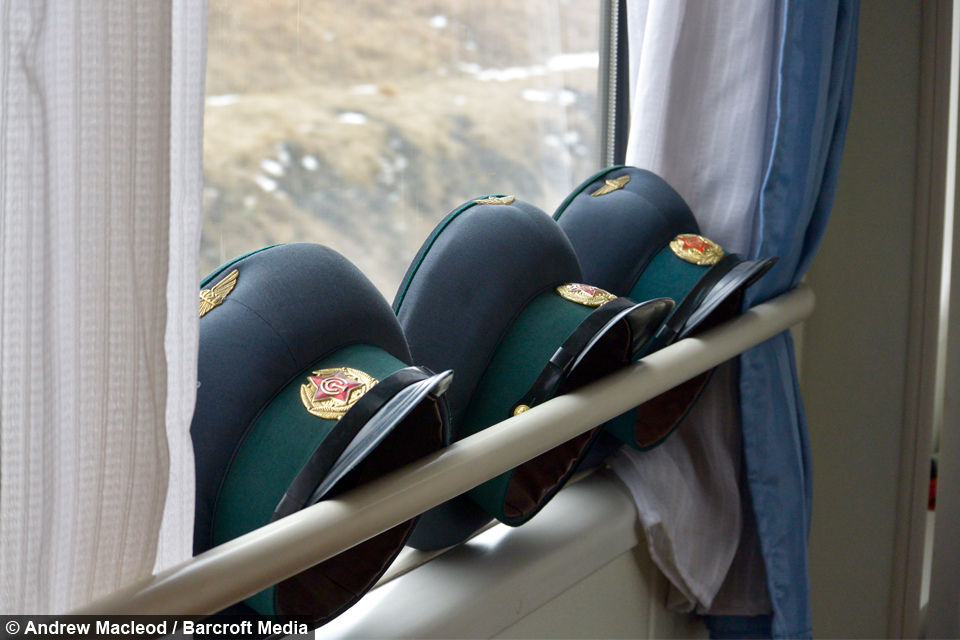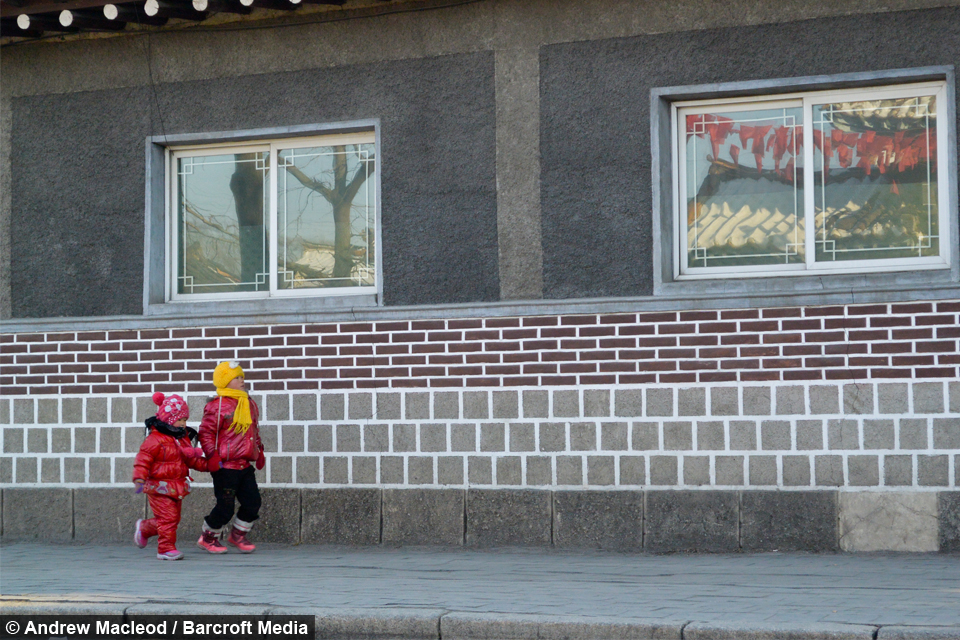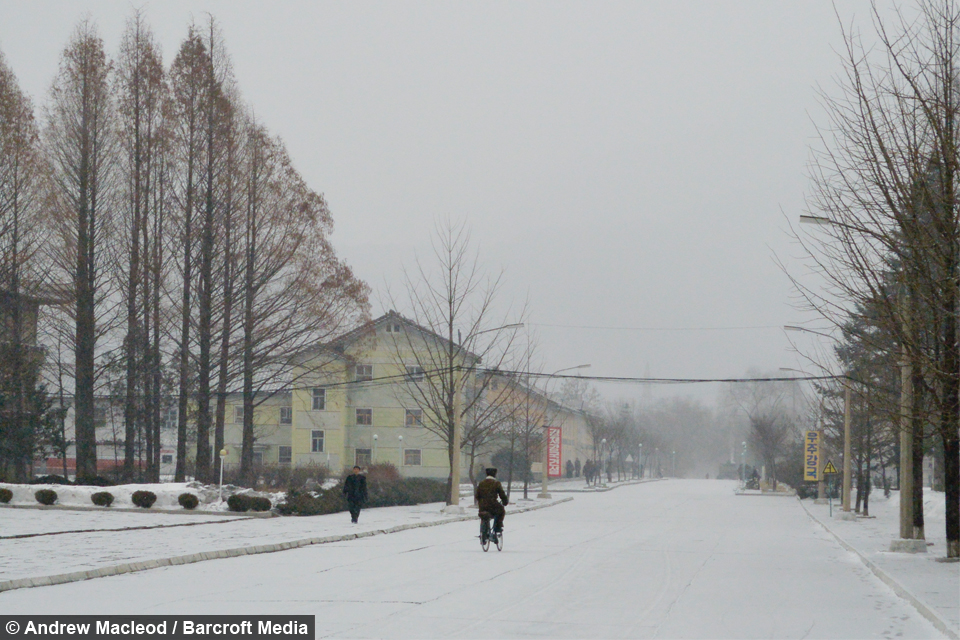Holidaying In North Korea: Travelling Around Kim Jong-Un's Secretive State
By RebeccaSLewis @Rebecca Lewis
Scroll down for the full story
Videographer / Director: Andrew McLeod
Producer: Rebecca Lewis
Editor: Ian Phillips
But at a time when the secretive state was still welcoming tourists, Australian businessman and former aid worker Andrew Macleod made the journey to the mysterious nation.
Andrew's holiday snaps and camera footage provide a unique insight into the reclusive country, where state propaganda reigns supreme and all news comes via the state-run Korean Central News Agency (KCNA).
Even as the state issued reports that its leader, Kim Jong Un, was ill, rumours abroad persisted he had been deposed until he made a recent public appearance after a month-long absence.
Undeterred by the repressive state’s reputation, Andrew MacLeod, a 47-year-old Australian businessman and former aid worker, had long dreamed of visiting every country in the world.
And with more than 100 stamps on his passport, a short trip to the Democratic People’s Republic of North Korea was too good an opportunity to pass up.
In February 2013, Andrew boarded a plane from Beijing to Pyongyang armed with his video camera.
It can be difficult to get into North Korea but not impossible and all tourists must book onto a pre-planned tour to approved sites, hiding from view the poverty, starvation and notorious gulags.
Andrew was treated to a four-day excursion around the snow-covered capital.
His first observation was the abundance of concrete bunkers – and attractive border guards.
As he travelled through the city on the deserted roads – only a small majority of North Koreans own cars – he was kept under the watchful eye of two native guides.
But he said the lack of freedom he had over his trip was expected: “I would love to have spoken to people on the streets however if I did I knew that both they and my guides would get in trouble for it.”
Interaction with normal North Koreans was also limited as most appeared too afraid to engage with Westerners.
He said: “People don’t tend to make eye contact with foreigners, they don’t like it.”
While young children were happy to wave older North Koreans avoided eye contact.
He added: “One would assume that if they did they would get in trouble.”
But despite their trepidation towards Westerners, locals were friendly towards each and other and even let their children roam the empty streets unsupervised.
He said: “[It was] indicative of a society that was relatively safe and free from petty crime.
“The thing about heavily controlled dictatorships is the state knows everything so petty crime does not exist. If you steal you get caught - and the penalty is harsh.”
The first stop on the tour was the Kumsusan Palace of the Sun where Kim Il-Sung and Kim Jong-il’s bodies remain in state.
The enormous white building, where loudspeakers blast out patriotic music over the open square, is a draw to loyal North Koreans hoping to pay their respects to the founding father.
But it serves as a stark reminder of the obvious discrepancy of wealth among the population.
Even so, weeping North Koreans poured into the building, many of whom were overcome with emotion at seeing the father and son lying in state.
Andrew said: “If you only have one source of information you believe that source of information.
“So the emotion that you see is genuine emotion. But it’s emotion based on flawed information.”
Andrew soon discovered propaganda permeated every aspect of daily life.
The metro network, which is one of the deepest in the world and also doubles as a nuclear bunker, featured murals on the walls and orchestral music blaring from the tannoy systems.
Andrew was even advised how to take photos of the monuments, which he audaciously named ‘Kimuments’ because of the volume dedicated to the Kim dynasty. Only full length photos of the statue were allowed.
One memorial did cause a reflective moment for the Australian tourist.
As he climbed the steps to a World War Two monument while clutching a bouquet of flowers, he said to the camera: “I just pointed out to our guides and he was kind of surprised when I did this, during World War Two against the Japanese, North Korea and Australia were on the same side - and he’d forgotten that.
“We often forget that this cemetery is for those the Japanese killed and this [war was] one in which Australians, Americans and North Koreans [were] comrades in arms.”
As a frequent traveller to difficult countries, including Iraq, Afghanistan, the former Yugoslavia and Rwanda in the 1990s, Andrew noted that most people living in different environments wanted to get on with their lives in the constraints they were born in.
But he added: “One could feel the fear people had for their government and one was amazed at the all pervasive control the government had over every aspect of people’s lives.
“I cannot see the break in the cycle to cause the freedom for these people. I hope they get it but I don’t see the roadmap.”
